When you buy products via links on our website, we might receive an affiliate commission. Learn more
20 Hanging Planter Ideas for Your Home
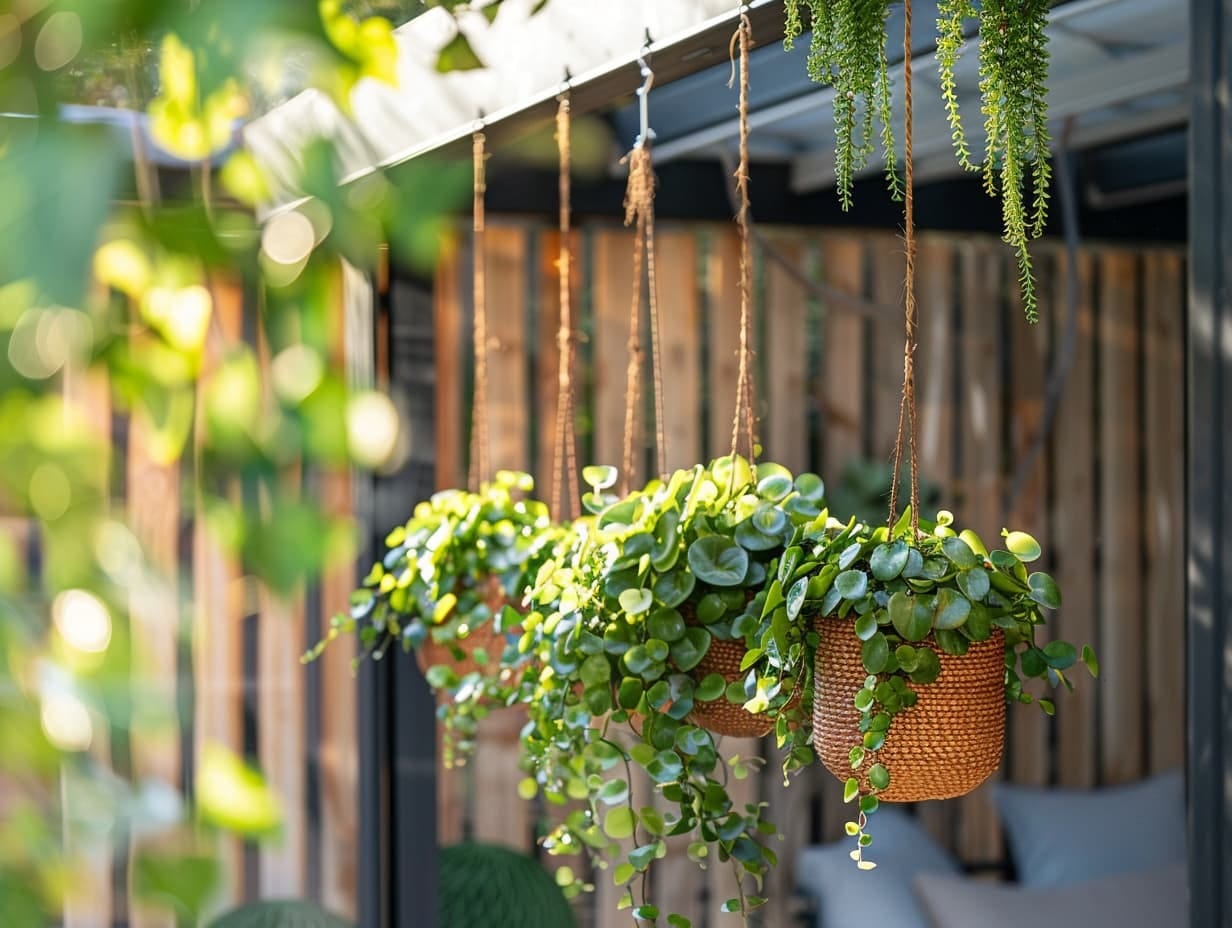
Explore 20 creative ways to hang plants in your home, transforming your living spaces into lush, green sanctuaries.
Whether you're looking to craft Boho-style macrame plant holders, utilize sturdy ceiling hooks, repurpose old birdcages, or convert vintage chandeliers into breathtaking plant displays, this blog offers practical and stylish solutions for integrating greenery into both indoor and outdoor areas.
Use the Macrame Technique to Create Boho Style Hanging Plant Holders
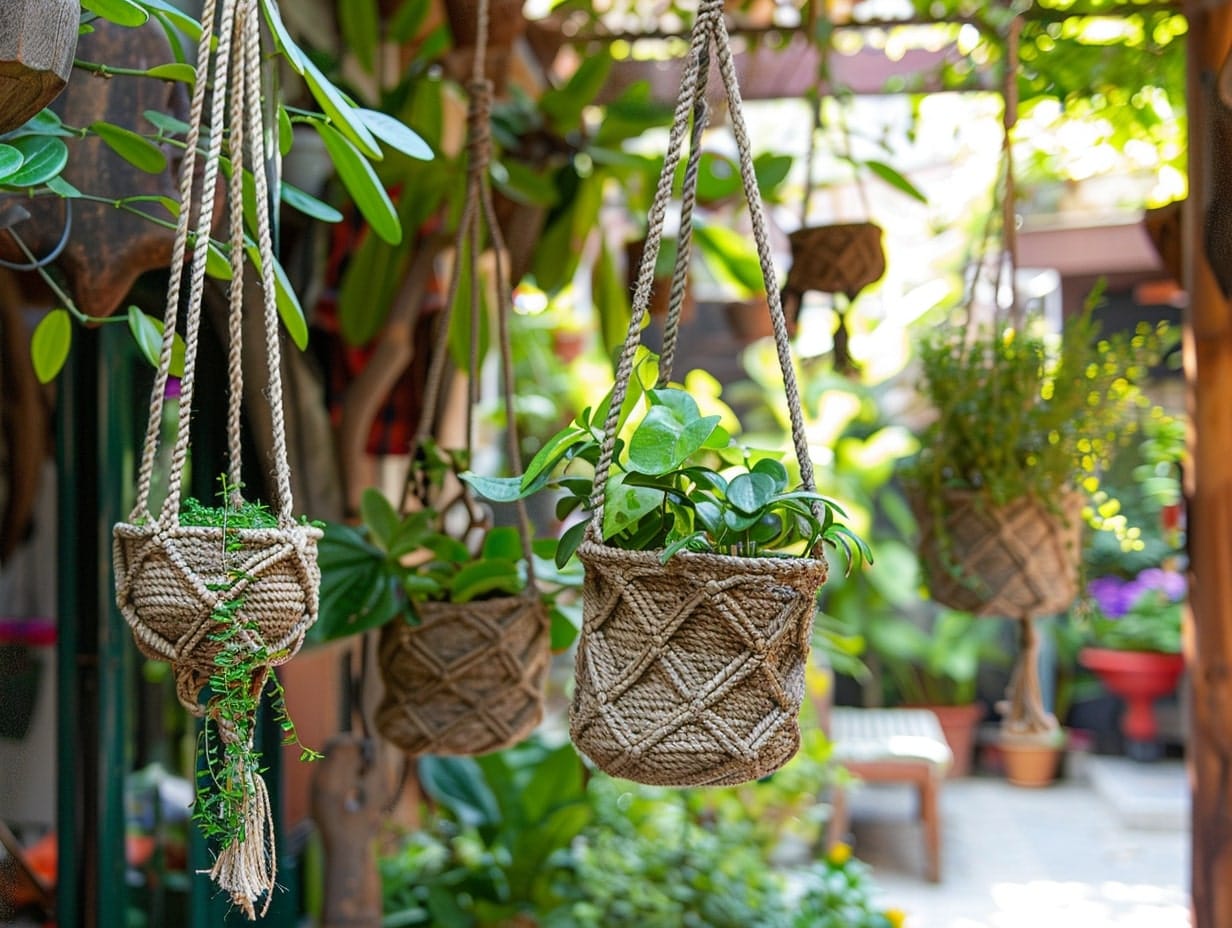
Macrame, the art of knotting cord or string in patterns, blends seamlessly with Bohemian decor, known for its eclectic and natural aesthetic.
To start, select a high-quality cotton, hemp, or jute cord, which will provide both durability and a rustic look. You can craft these hangers in various patterns, from simple twists and square knots to intricate spirals and net-like structures.
Incorporate beads, feathers, or dyed threads to add a splash of color and texture. The beauty of macrame plant holders lies in their versatility; they can be tailored to fit any pot size and complement any room's decor.
Hang these macrame plant holders near windows or in corners to transform an empty space into a cozy, green nook, making it a perfect project for DIY enthusiasts.
Choose Traditional Classic Wire or Wicker Baskets With Strong Chains
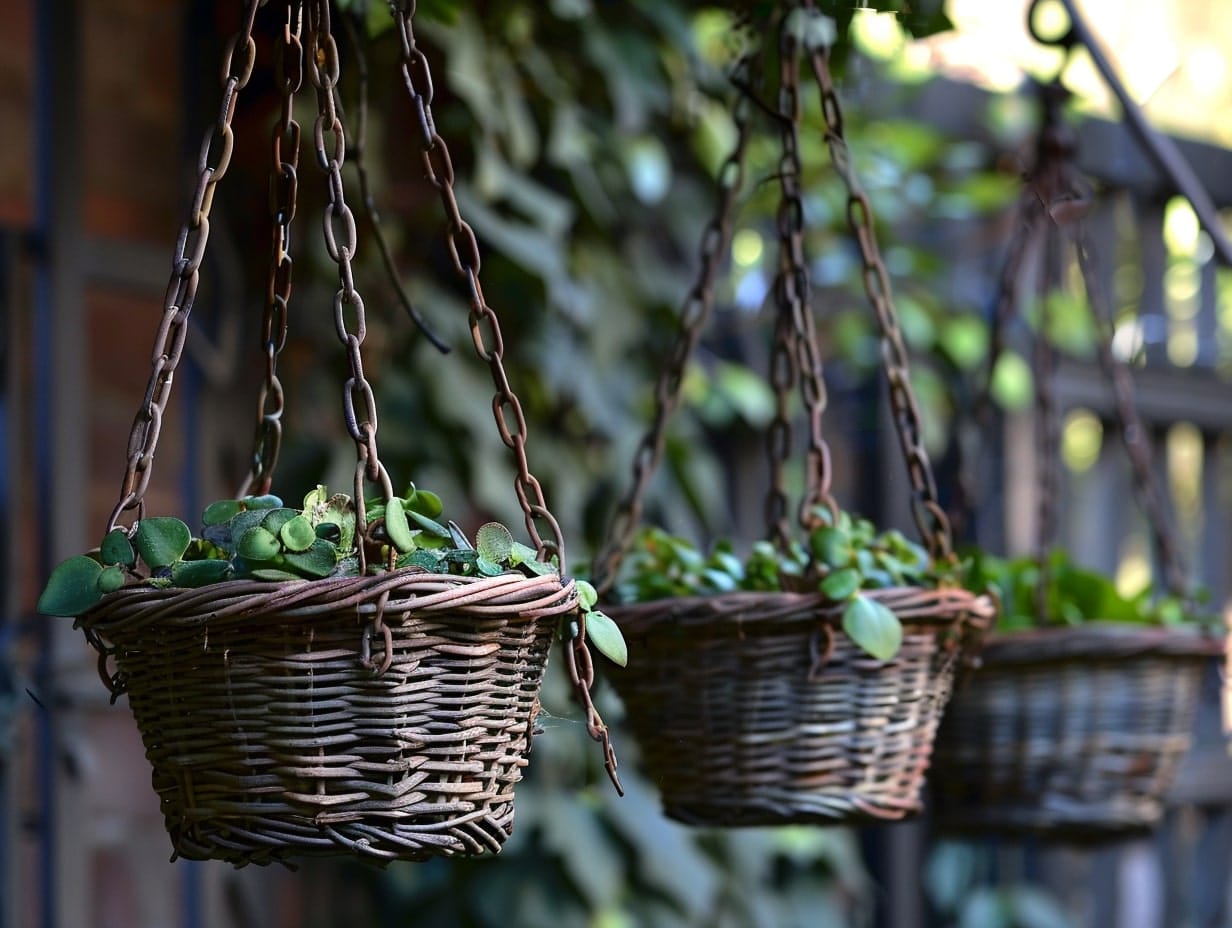
Wire baskets, often made from durable metals, provide a robust structure that's ideal for heavier plants. Their open design allows for ample airflow and drainage, promoting healthy plant growth.
Wicker baskets, on the other hand, offer a softer, more natural look with their woven design, creating a warm, inviting ambience.
When choosing chains, select sturdy, weather-resistant materials like stainless steel or coated metals to ensure longevity and safety. Adjust these chains to different lengths, allowing for flexibility in how the plants are displayed, whether hung at different levels for a tiered effect or uniformly for a cohesive look.
Use Ceiling Hooks to Hang Pots in Corners or Above Furniture

This method is particularly effective in smaller living spaces or in areas where surface space is limited. By suspending pots from the ceiling, you can draw the eye upward, adding depth and dimension to a room.
When selecting ceiling hooks, ensure they are robust enough to support the weight of the pot and the plant, especially when watered. Installation typically involves drilling into the ceiling and securing the hook with appropriate anchors or screws to ensure stability.
Once installed, you can hang pots made of various materials like ceramic, metal, or plastic. Consider using adjustable-length chains or ropes to allow easy access for watering and maintenance.
Hang Plants From the Beams of Your Pergola for Outdoor Garden Vibes
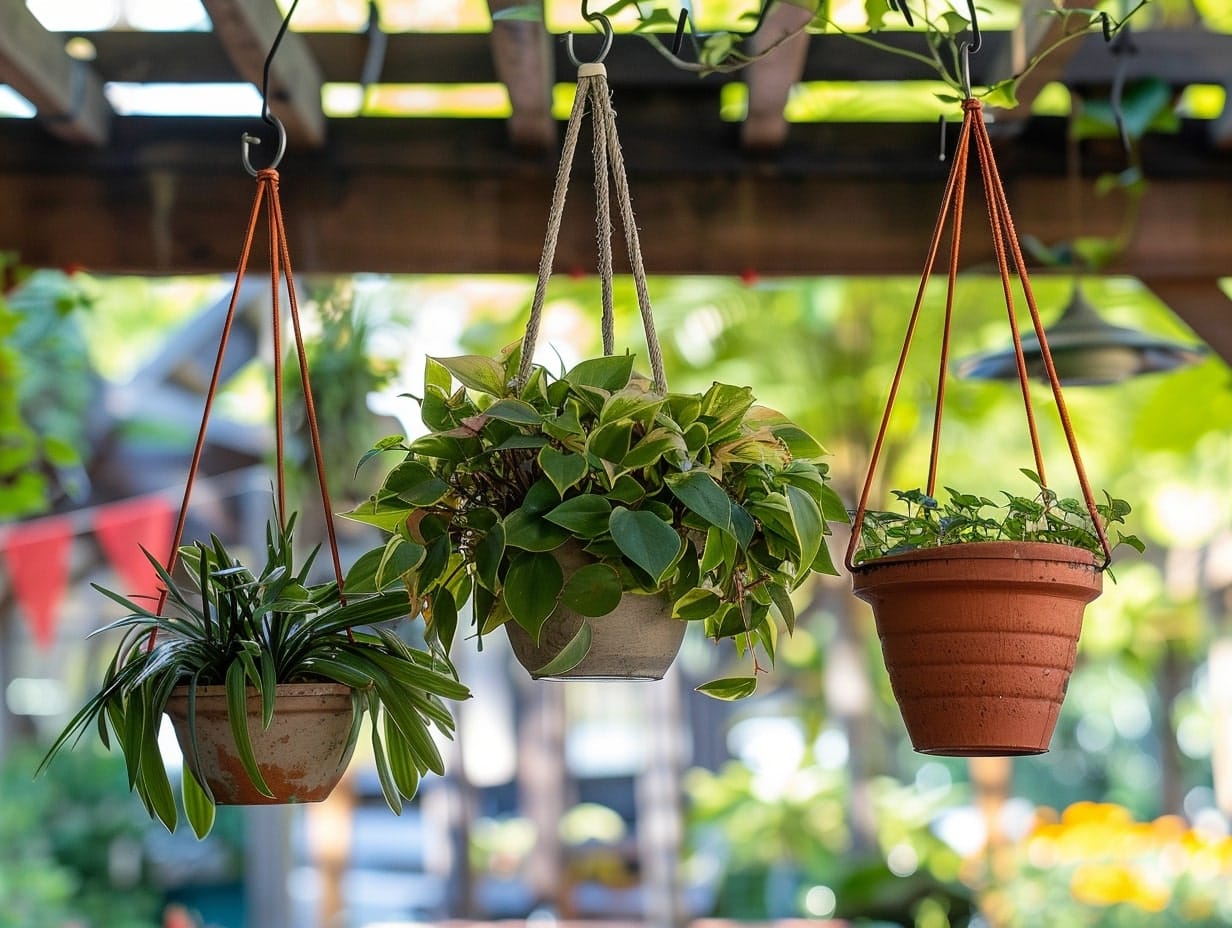
Pergolas, with their open structure and strong beams, offer the perfect framework for suspending a variety of plants, creating a natural canopy that provides shade and visual interest.
When choosing plants for your pergola, consider varieties that thrive outdoors and can benefit from the partial shade that pergolas typically provide.
Trailing plants like ivy, jasmine, or wisteria can drape beautifully over the sides, while ferns and spider plants can add texture and depth when hung at different heights.
To hang your plants, use sturdy hooks or brackets that can be secured onto the wooden beams. Ensure they are properly installed to support the weight of the plants, especially after watering.
Repurpose Old Birdcages as Unique Plant Holders

Start by cleaning the birdcage thoroughly and consider giving it a fresh coat of paint if you want to match it with your home's color scheme. Rust-resistant paint is a good option, especially if you plan to use it outdoors.
For a more vintage look, a light distressing after painting can enhance the rustic charm.
Select plants that fit comfortably within the cage, considering how they will grow over time. Trailing plants like pothos or ivy look especially beautiful as they weave through the bars, creating a lush overflow. Alternatively, compact plants such as succulents or small ferns can be grouped inside for a mini indoor garden.
To use the birdcage, you can either hang it from a ceiling hook or place it on a flat surface where it can be admired. If hanging, ensure the chain and hook are strong enough to support the weight of the cage and the plants.
Hang Plants With Decorative Chains for Enhanced Aesthetic Appeal
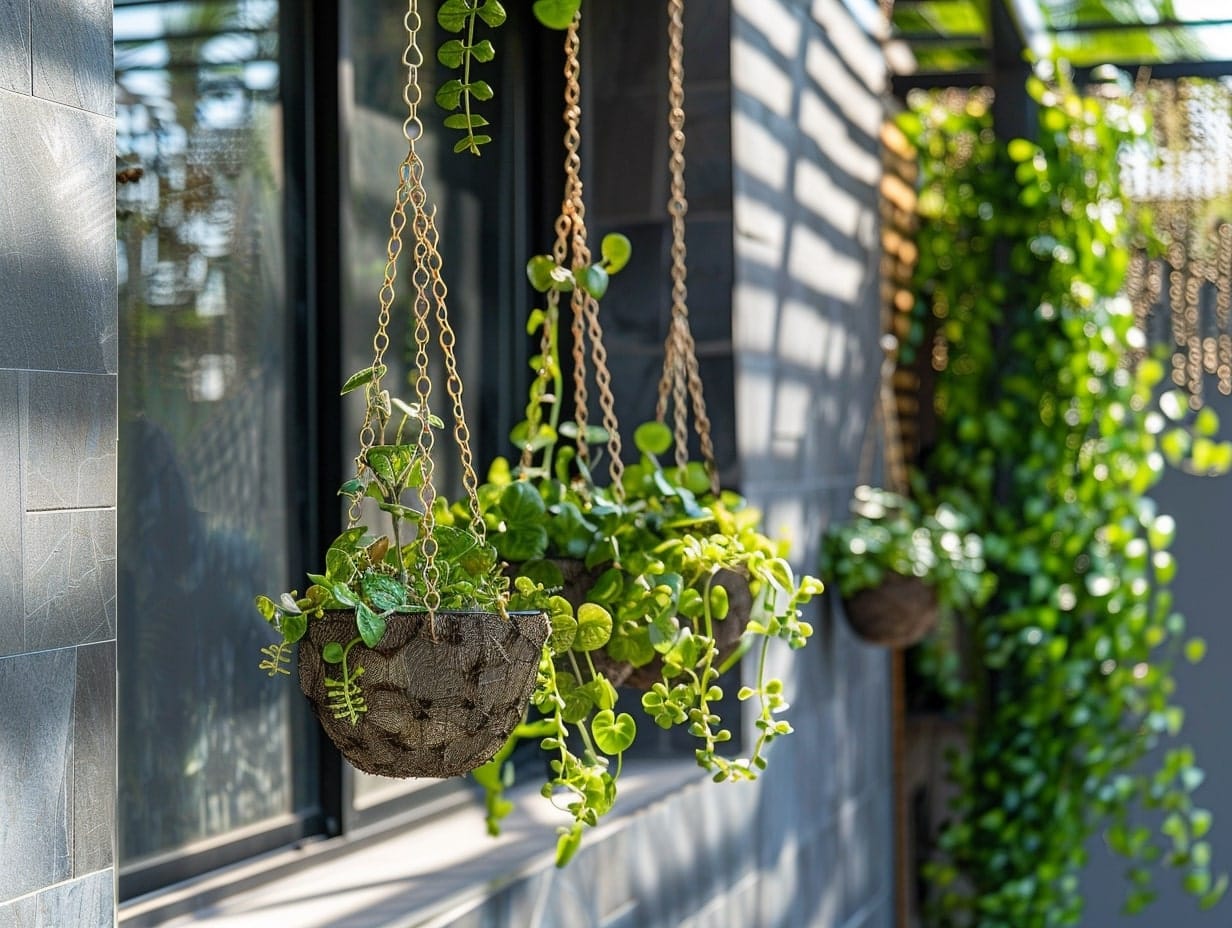
Decorative chains are available in a variety of materials and finishes such as brass, antique bronze, polished nickel, or even colored options. They provide ample opportunities to match any decor style from modern to rustic.
To get started, select chains that complement both the style and color of the pots and the room's overall design. For a cohesive look, choose chains with intricate designs or textures that add an artistic touch to the simple act of displaying plants.
Using decorative chains not only serves a functional purpose but also adds a touch of elegance and sophistication.
Convert an Old Chandelier Into a Stunning Planter for Multiple Pots

Start by selecting a chandelier that suits your space in terms of size and style. Remove any electrical wiring and fixtures, ensuring it is safe and suitable for holding plants.
Next, choose how you will attach the pots. If the chandelier has candle holders, these can sometimes directly support small pots or mason jars. Alternatively, you can attach hooks or create wire baskets that hang from the arms of the chandelier where bulbs would traditionally be placed.
Select plants that will thrive in the environment where you plan to hang the chandelier. For a lush appearance, opt for trailing plants like petunias, ivy, or ferns, which will drape beautifully over the sides. Succulents are a great choice for a low-maintenance option.
Finally, install a strong hook in your ceiling that can support the weight of the chandelier planter. Ensure it’s securely mounted, especially when the plants are watered and at their heaviest.
Mount a Curtain Rod Across a Window and Use It to Hang Plants
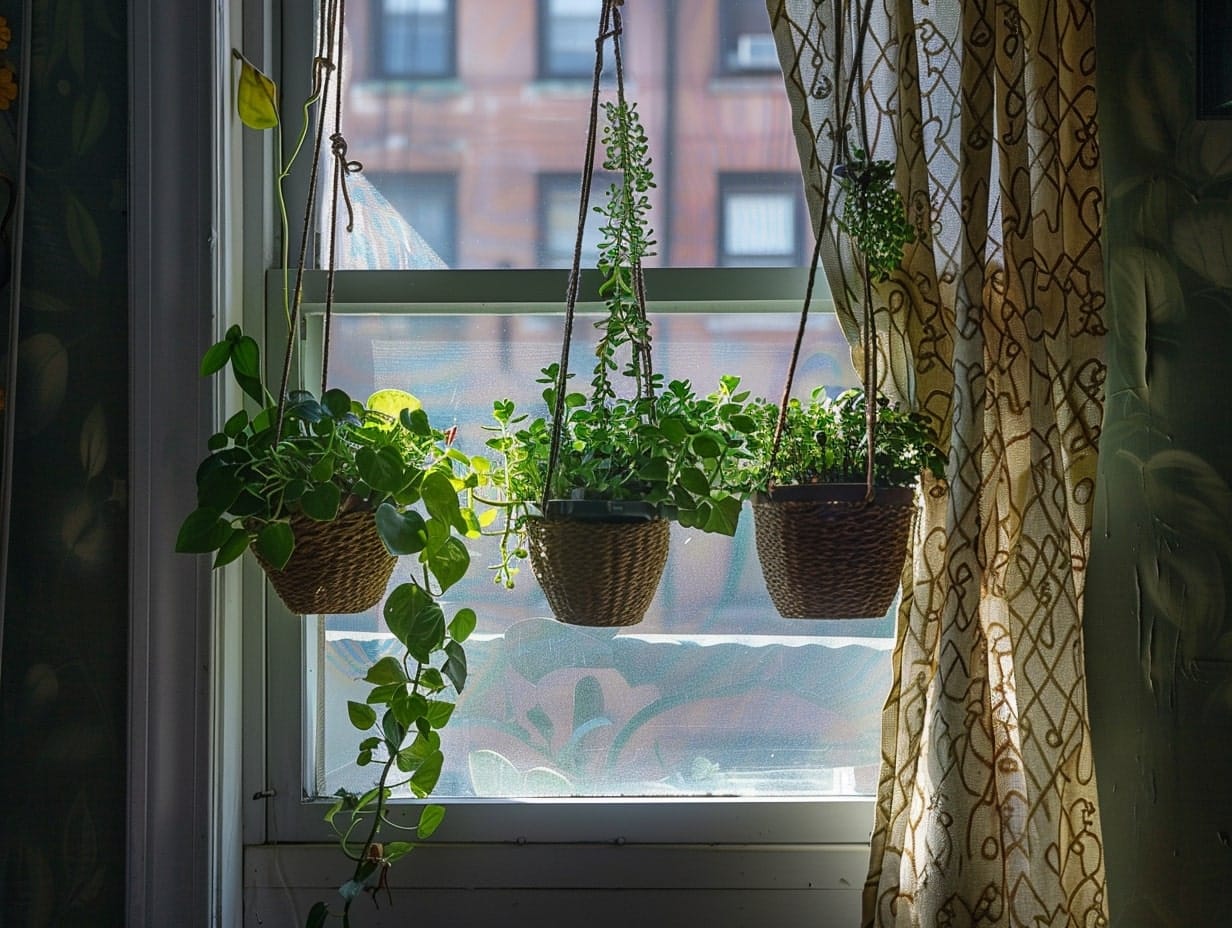
This method is particularly effective in areas where floor or shelf space is limited, allowing you to capitalize on vertical space while enhancing your window’s visual appeal.
Start by selecting a sturdy curtain rod that can bear the weight of the plants you intend to hang. Position the rod above the window frame, ensuring it's level and securely attached to the wall studs or use appropriate wall anchors. Once installed, you can hang your plants using decorative hooks, s-hooks, or even macrame hangers that slide onto the rod.
Choose plants that thrive in the amount of light the window provides. For a window with direct sunlight, succulents or cacti are suitable, whereas ferns and spider plants may prefer the indirect light of a north-facing window.
Hang Glass Terrariums for Small Succulents or Plants

Glass terrariums come in various shapes, such as globes, pyramids, or diamonds, and can be hung at different heights to create a visually captivating display.
To begin, select terrariums with an opening that allows for easy plant maintenance and airflow, which is crucial for the health of enclosed plants. Choose lightweight, sturdy hanging materials like thin chains or clear fishing lines for a floating effect.
Ensure the hooks or anchors used for hanging are securely installed in the ceiling or window frames to handle the weight and prevent accidents.
Small succulents, air plants, or mosses are perfect due to their low maintenance and size. These plants not only thrive in the confined space of a terrarium but also add a vibrant touch of greenery without overwhelming the delicate structures.
Arrange the plants within each terrarium, adding layers of sand, small stones, or decorative shells for additional aesthetic appeal.
Utilize the Ceiling of a Covered Balcony to Hang Plants

This method is especially beneficial for apartment dwellers or those with limited ground space, allowing you to enjoy a variety of plants without cluttering your balcony floor.
First, assess the structural integrity of your balcony ceiling to ensure it can support the weight of hanging plants, particularly when they are watered and at their heaviest. Install sturdy hooks or brackets securely into the ceiling joists or beams.
Choose planters that are weather-resistant and appropriate for the size and type of plants you wish to display. Explore a mix of trailing and upright plants to create visual interest and depth.
Trailing plants like petunias, ivy, or ferns will drape beautifully, softening the appearance of the balcony, while upright plants like herbs or small flowering bushes can add height and texture.
Install a Simple Pulley System to Easily Lower and Raise Plants for Care and Watering
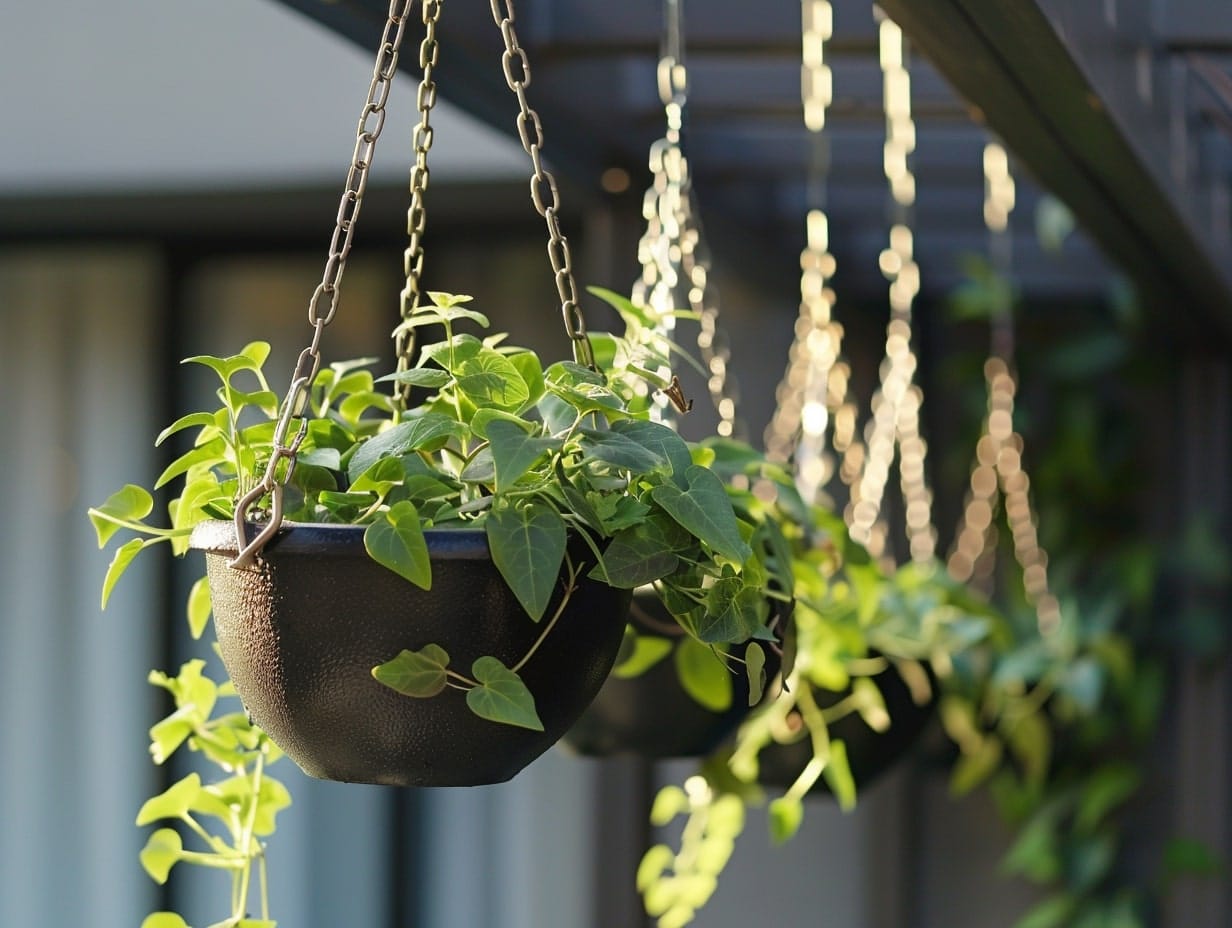
To set up a pulley system, you'll need a pulley, sturdy hooks, a strong rope or cord, and a secure anchor point on the ceiling or beam. Begin by installing a hook into a ceiling joist or other structural support that can hold the weight of your plants.
Attach the pulley to the hook, ensuring it's securely fastened. Thread the rope through the pulley, tying one end to the plant holder and keeping the other end accessible for adjustment.
Select a container that's both lightweight and durable to minimize the load on the pulley system. This setup allows you to easily pull the rope to lower the plants for watering, pruning, or other care, then raise them back into place effortlessly.
Install Pipes Along the Ceiling and Use Them to Hang Plants
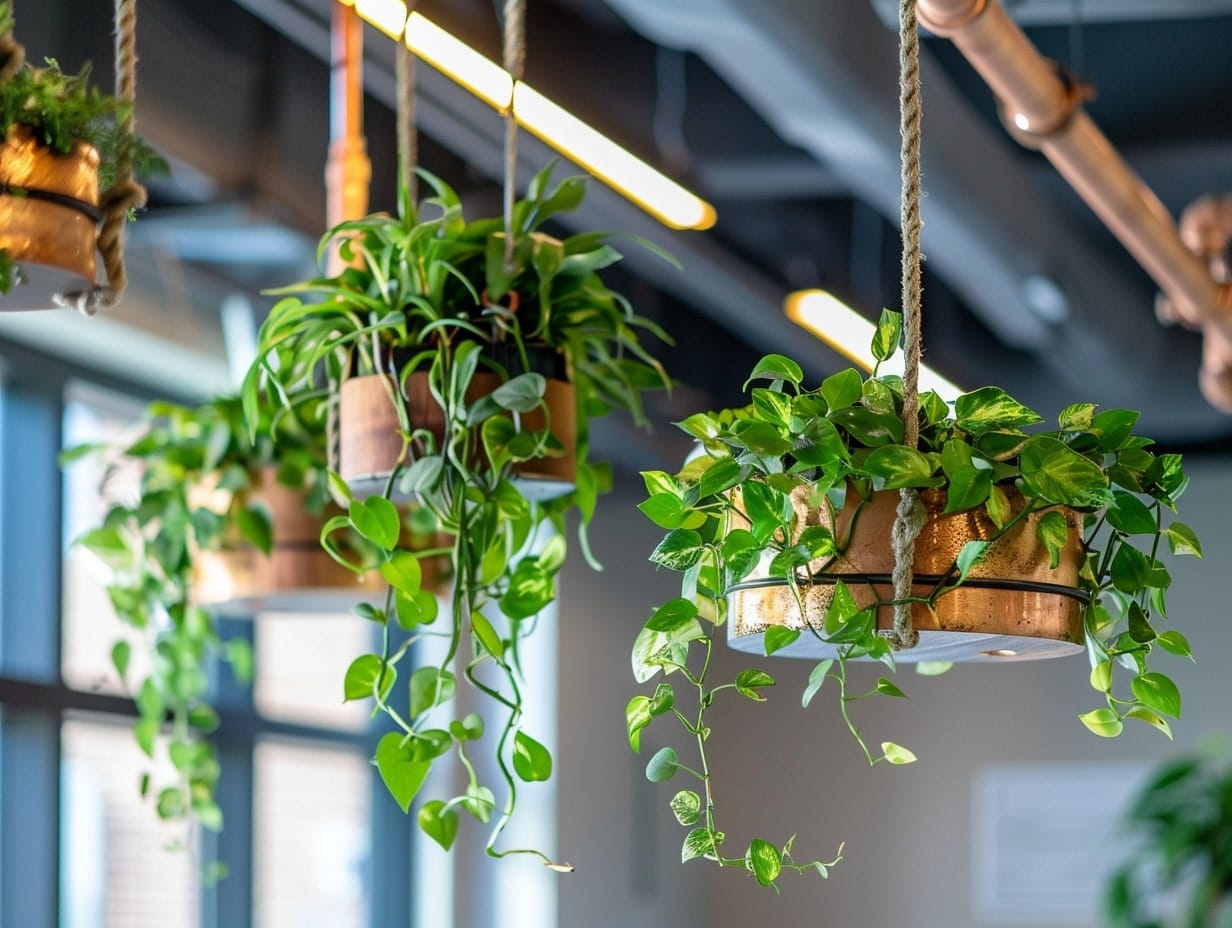
This method not only conserves floor space but also adds an industrial chic element to your decor. Using pipes, especially those made from materials like copper, black iron, or galvanized steel, provides a durable and visually appealing framework from which to suspend a variety of plant holders.
To begin, measure the area of the ceiling where you wish to install the pipes. Plan a layout that distributes the weight evenly and complements the room's aesthetics. You can choose to run a single length of pipe or create a grid pattern for additional hanging points and visual interest.
Once installed, you can hang plants using S-hooks, which easily latch onto the pipe and allow for adjusting plant heights and positions.
Trailing plants like pothos or string of pearls will drape beautifully, creating a lush green canopy, while upright plants can be hung at intervals to break the monotony and add depth.
Create Stylish Hangers Using Leather Straps for a Modern Touch
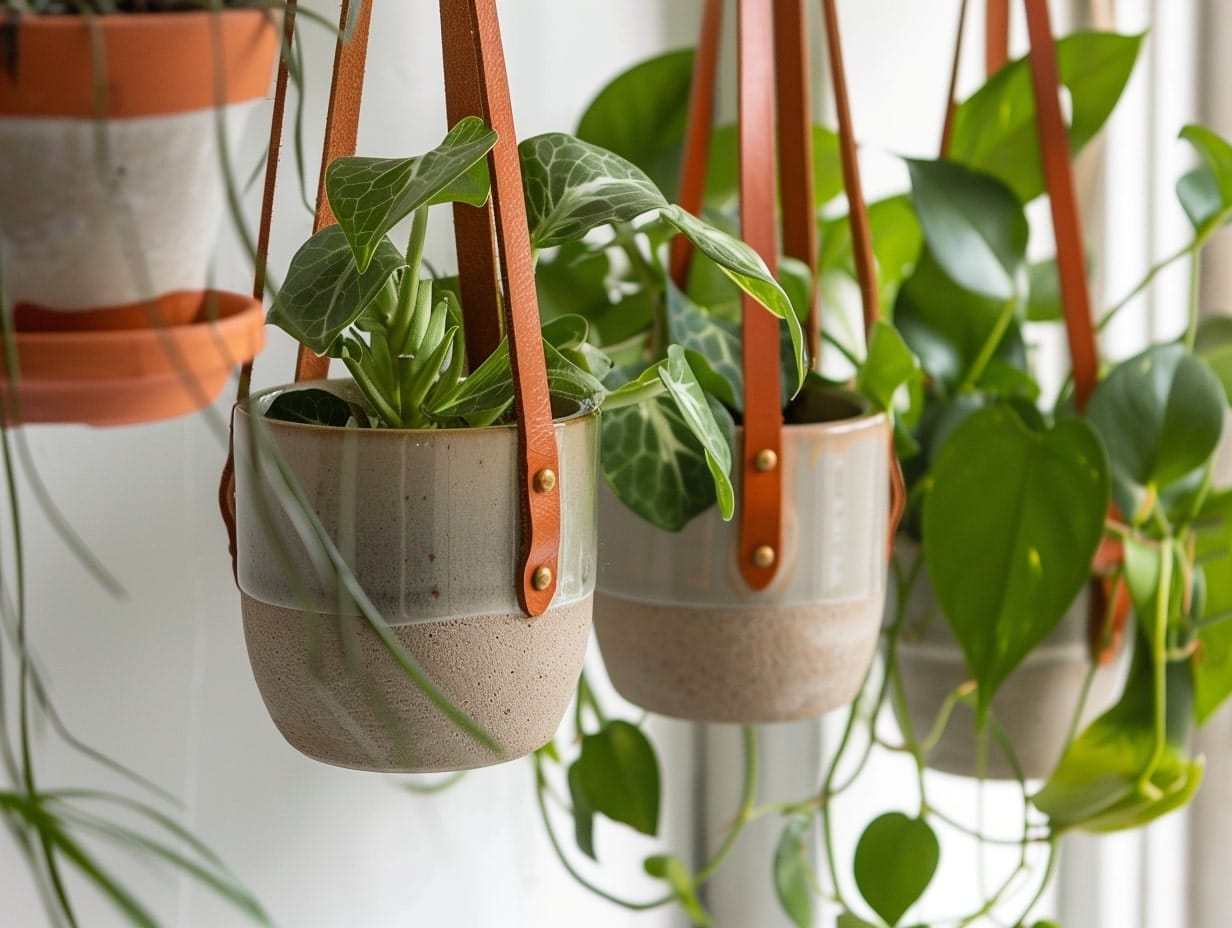
To start, choose high-quality leather straps — these can be purchased pre-cut at craft stores or you can cut them yourself from larger pieces. Ensure the leather is sturdy enough to hold the weight of the plant and pot. The thickness and width of the straps will depend on the size of the pots you intend to use.
For each plant hanger, you will need two lengths of leather strap. Measure how long you want the straps to be, keeping in mind both the height at which they will hang and the extra length needed for attaching them. Punch holes at both ends of each strap using a leather punch.
Attach the straps to the pot by looping them around the base of the pot and securing them with brass or stainless steel bolts and nuts, which add to the aesthetic while ensuring durability.
You can cross the straps at the bottom or keep them parallel, depending on the design you prefer.
Cut Plastic Bottles Into Planters and Hang Them Using Strings or Wire
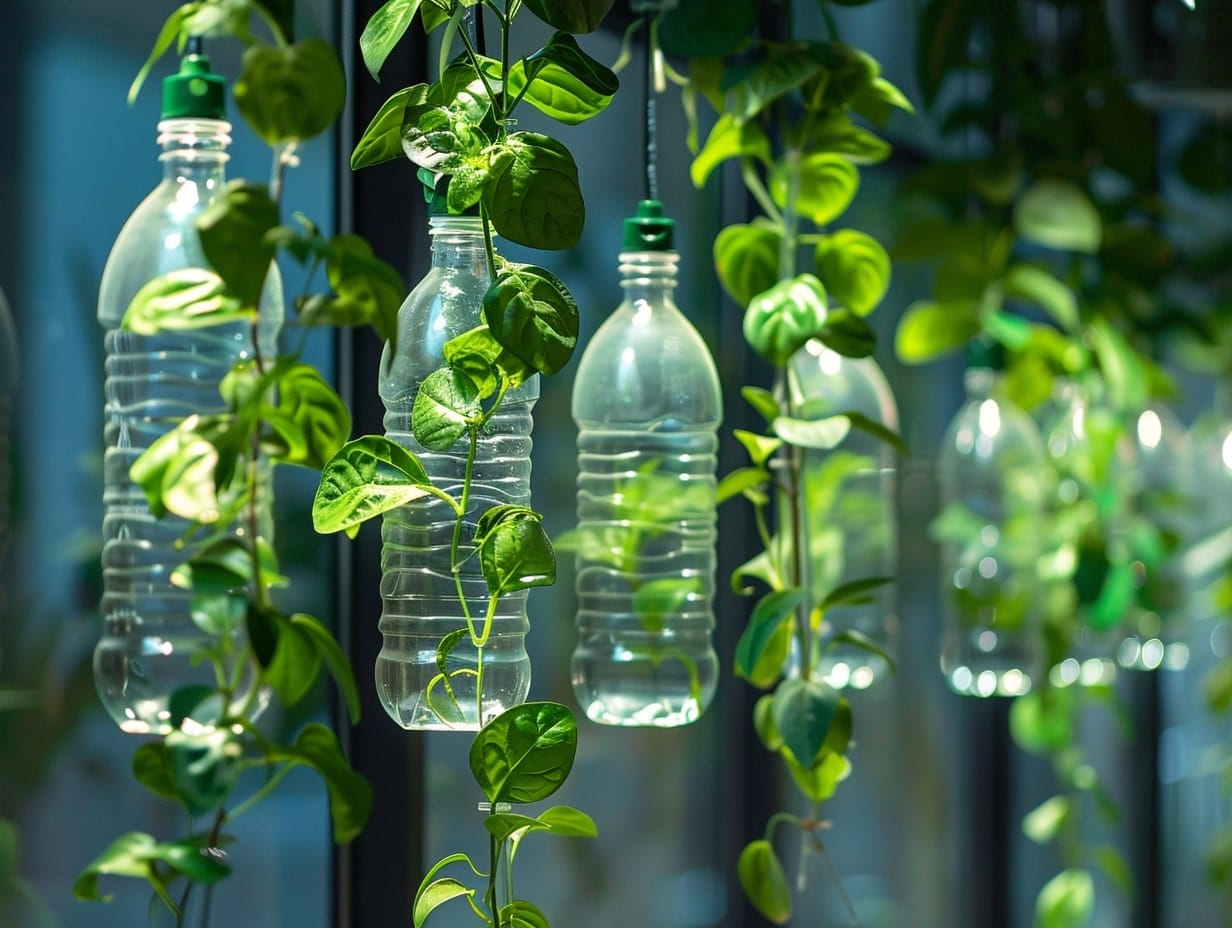
You'll need empty plastic bottles (any size will do, but 1-liter or 2-liter bottles are ideal), sharp scissors or a utility knife, acrylic paint (optional), strong string or wire for hanging, and a drill or awl to make holes.
Clean the bottles thoroughly and remove any labels. Decide the size and shape of your planter; you can cut the bottle in half for deeper plants or nearer the top for shallow root systems.
To enhance the appearance of your planters, paint them with acrylic paint suitable for plastic. You can add designs, patterns, or even write plant names on them. Allow the paint to dry completely.
Fill the bottom of your new planter with a suitable potting mix and add your plants. Small herbs, succulents, and flowers are perfect for these types of planters.
Choose a sunny spot, such as near a window, on a balcony, or even outdoors on a fence or garden wall. Hang your new recycled planters at different heights to create a visually interesting display.
Decorate Old Tin Cans and Hang Them as DIY Planters
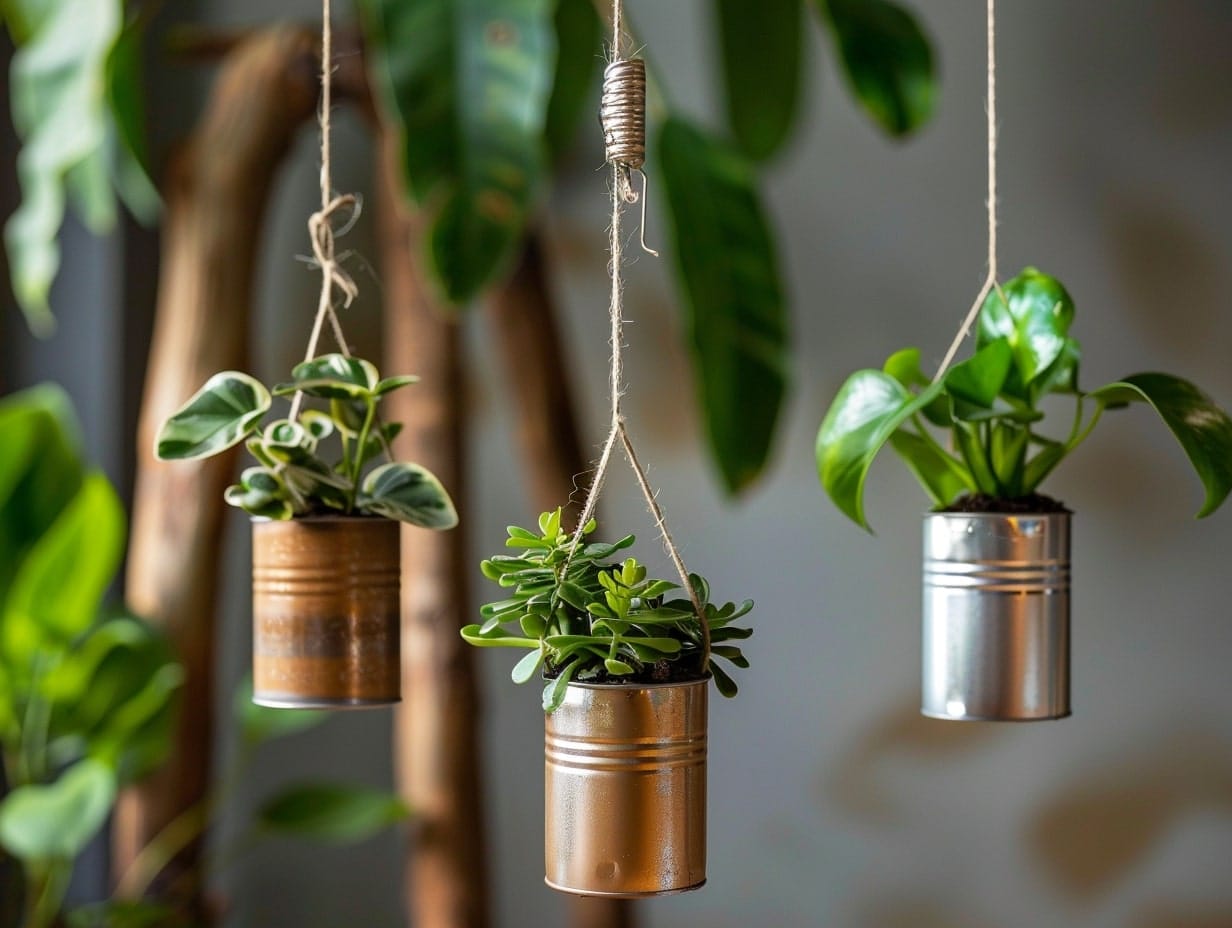
You’ll need empty tin cans (any size will work, but soup or coffee cans are ideal), a hammer and nail or drill for making drainage holes, acrylic paint, brushes, and decorations such as stencils, fabric, twine, or even decoupage materials. Additionally, you’ll need strong wire or rope for hanging.
Clean the cans thoroughly to remove any residue and labels. Smooth any sharp edges with sandpaper to ensure safety during handling. Once clean, use a hammer and nail or a drill to make several drainage holes in the bottom of each can.
Paint the cans with acrylic paint, which adheres well to metal and withstands the elements if the planters are to be hung outdoors. Fill each can with a suitable potting mix and plant your choice of flowers, herbs, or small green plants. Succulents work particularly well in these types of planters due to their low water requirements.
Choose a suitable location for your tin can planters, such as along a fence, on a balcony rail, or even indoors near a window. Arrange them at different levels to create a visually appealing display.
Hang Terracotta Pots With Individual Ceiling Hooks
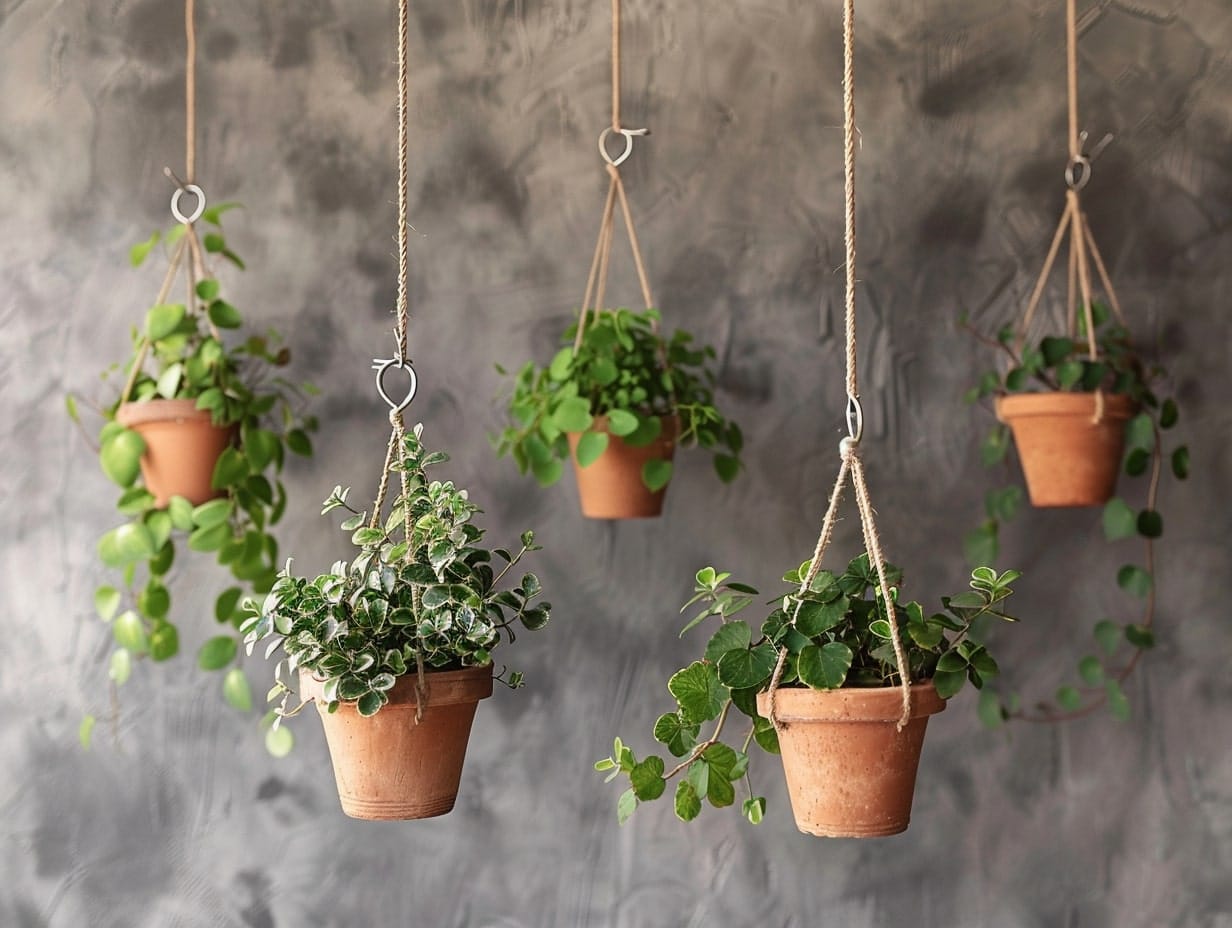
Terracotta's porous nature is excellent for plant health, promoting root aeration and moisture balance. To start, choose robust ceiling hooks that can support the weight of the pots, and ensure they are securely anchored into the ceiling joists or use strong drywall anchors.
Attach adjustable chains or durable ropes to the pots, allowing for easy height adjustment and maintenance access. This setup not only utilizes vertical space effectively but also brings a warm, earthy aesthetic to any room.
This setup is ideal for creating a vibrant display of herbs, succulents, or flowers, enhancing the room's ambiance while keeping your plants healthy.
Use S-Hooks to Hang Plant Holders
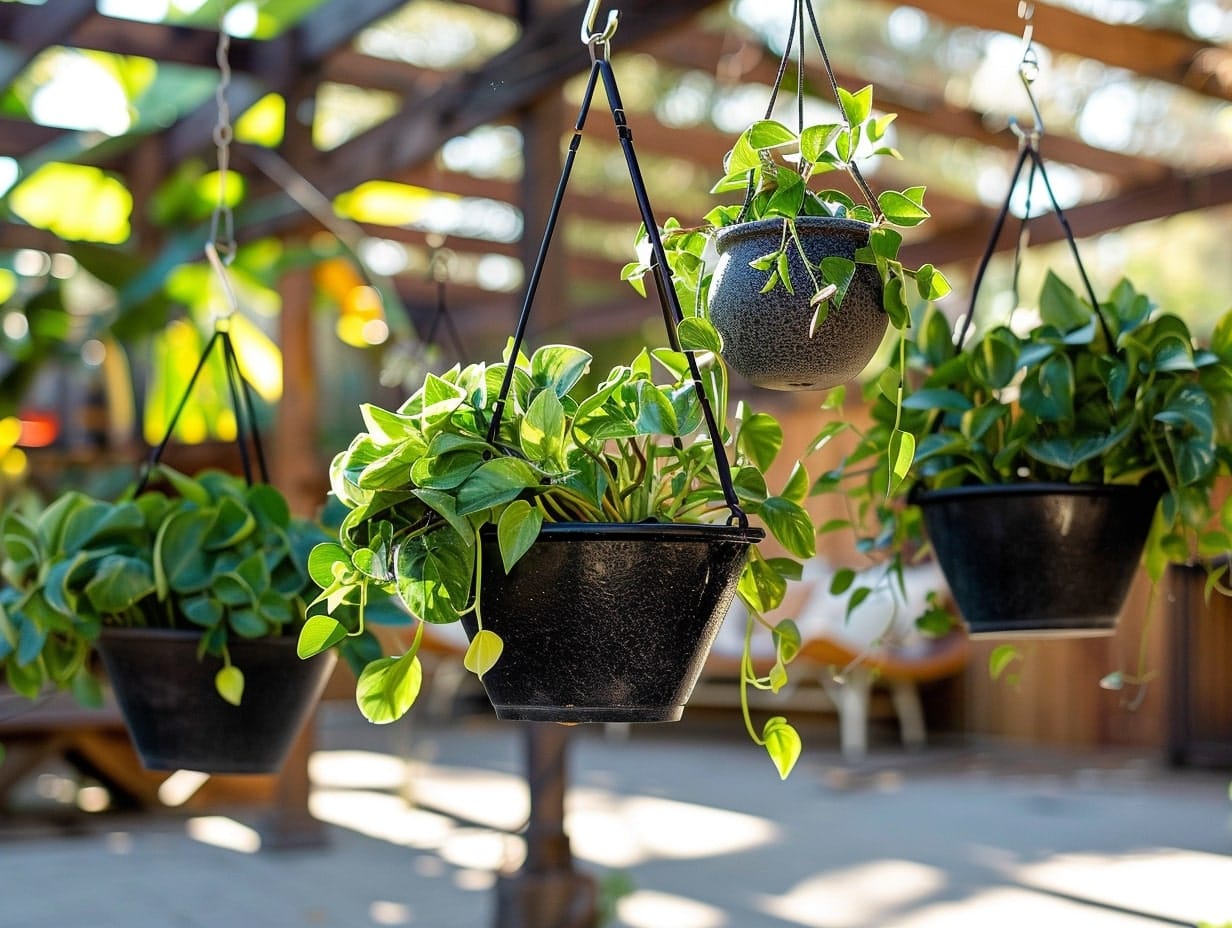
Using S-hooks to hang plant holders is a simple and flexible solution for displaying your greenery.
These hooks are highly versatile and can be easily attached to existing rods, rails, or even open shelving, making them perfect for indoor and outdoor settings.
The key benefit of S-hooks is their ease of installation and adjustment; you can quickly reposition your plants without any tools, optimizing their exposure to light or changing the arrangement for visual interest.
Choose S-hooks that match the diameter of the rod or rail you plan to use and ensure they are sturdy enough to support the weight of your pots. Metal S-hooks are ideal as they offer strength and durability, and they come in various sizes and finishes to match any decor.
Wrap Vines Around a Hanging Lamp or Frame
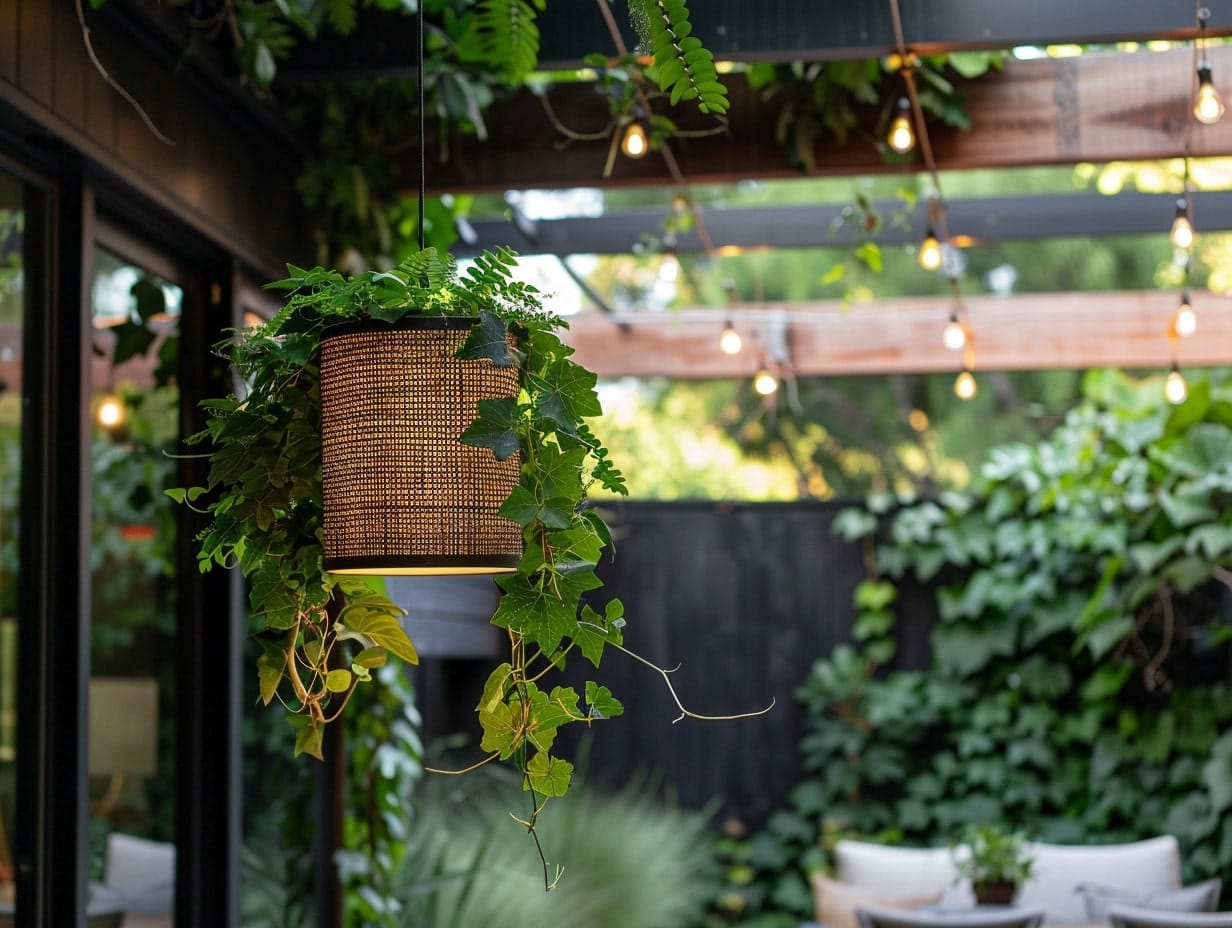
This method works particularly well with climbing plants like pothos, ivy, or philodendron, which naturally seek out structures to latch onto as they grow.
Start by selecting a sturdy lamp or frame that can support the added weight of the plants without being overwhelmed.
Gently guide the young vines around the base of the lamp or along the sides of the frame, securing them loosely with small ties if necessary to help them start their climb.
As the vines grow, continue to train them along your desired path, taking care not to constrict any parts of the plant too tightly, which could hinder growth or damage the stem.
Drape Vines on a Curtain to Create a Hanging Plant Curtain

This approach transforms a standard window dressing into a vibrant feature, blending the softness of textile with the freshness of greenery.
Choose fast-growing, trailing plants such as English ivy, pothos, or string of hearts, which can easily adapt to indoor conditions and have a natural tendency to sprawl and cascade. Install a sturdy curtain rod above your window, ensuring it can handle the additional weight of the plants.
Hang lightweight, decorative pots or planters from the rod using S-hooks or small ropes tied in loops. Start by arranging the pots evenly across the rod, then gently guide the vines to intertwine with the curtain, allowing them to hang down naturally.
Over time, as the plants grow, continue to intertwine the vines with the curtain, creating a fuller, more integrated look.
Use Your Bed’s Headboard to Hang Small Plants
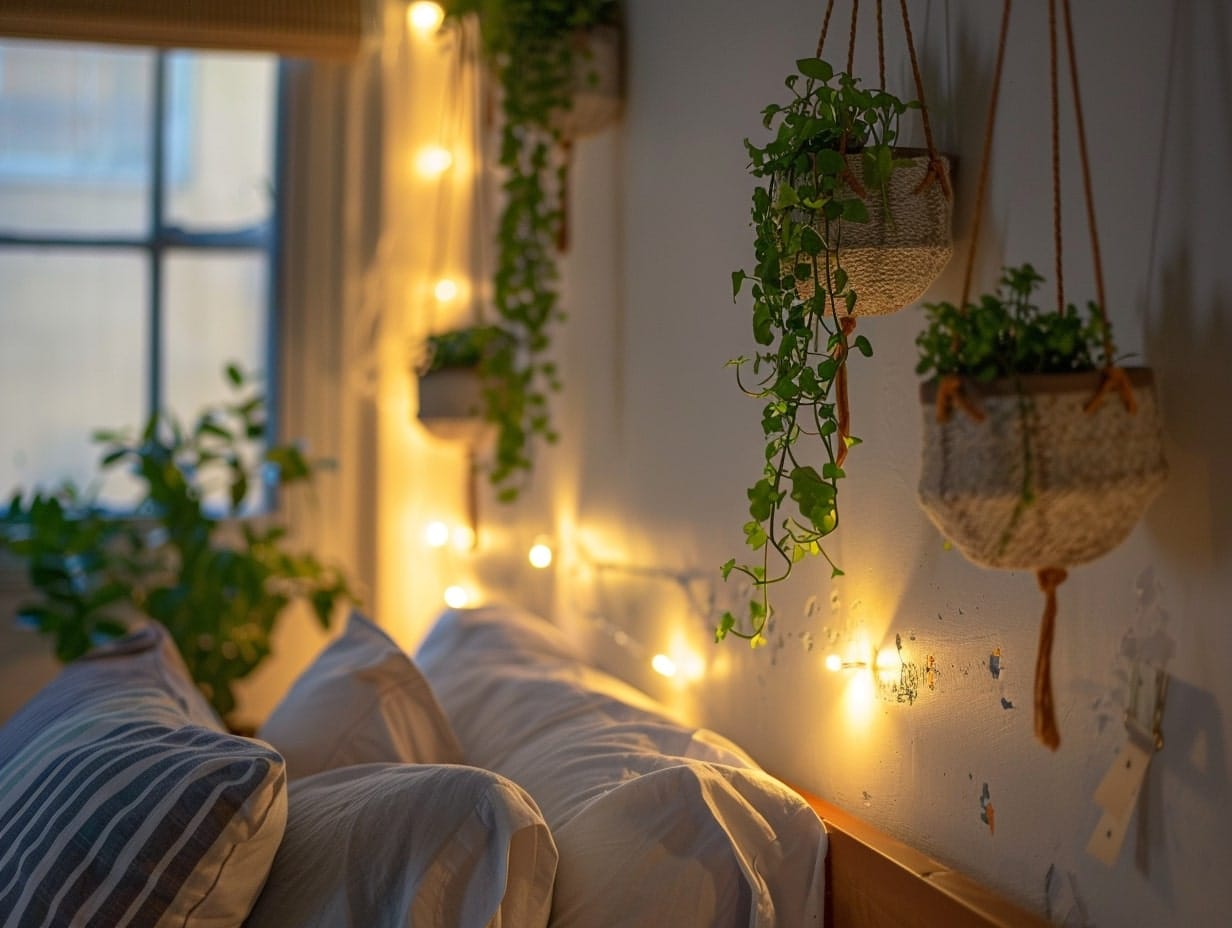
This method can transform an ordinary sleeping area into a serene, garden-like retreat, adding a touch of nature's tranquility right where you rest.
Choose a headboard that's sturdy enough to support small hanging planters without damaging it. If your headboard is made of solid wood or metal, it can typically support the weight of small plants.
Use small S-hooks or removable adhesive hooks if you're concerned about causing permanent marks; these can be attached directly to the headboard.
Select small, lightweight planters that won't pose a hazard if accidentally dislodged. Small succulents, air plants, or miniature ferns are ideal because they require minimal soil and water, reducing the risk of mess.
